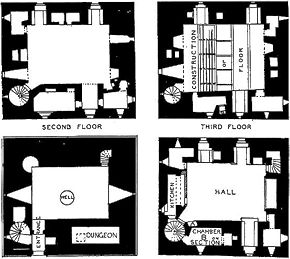history | fragments of Form |
| Kahn would thus seem to have found a way to accomplish what neither the architects of the Beaux-Arts nor the more impatient formalists of this decade had been able to do: to make the past and the present--the continuum of life--one, in terms of reason no less than wonder. Past and present do now play as one in his art. To watch him struggle with a problem is to see this. The dormitories for Bryn Mawr, now under study, show it. At present they are close to pure Form: three cubes touching at the corners, advanced and recessed walls creating side lights, a general rigid symmetry. He has only begun. Now he wants to know how the use of each space can show him how to Design it; he harasses his assistants to study each functional requirement to that end. Unlike most architects, he will henceforward hang breathless upon specific client demands, the more specific the better. Any one of them may cause him to redesign the building as a whole, which he will do if, in his phrase, "the Form does not hold." To help him he also has by his desk an unlikely 19th-century history of Scottish castles, in which a thick wall honeycombed with spaces of every conceivable shape caught his eye. Circles and triangles, evidences of specific use, fragments of Form. |
|
|
|
|
| David MacGibbon and Thomas Ross, The Castellated and Domestic Architecture of Scotland, 5 vols., Edinburgh, 1887. |
www.quondam.com/45/4502b.htm | Quondam © 2020.01.18 |

